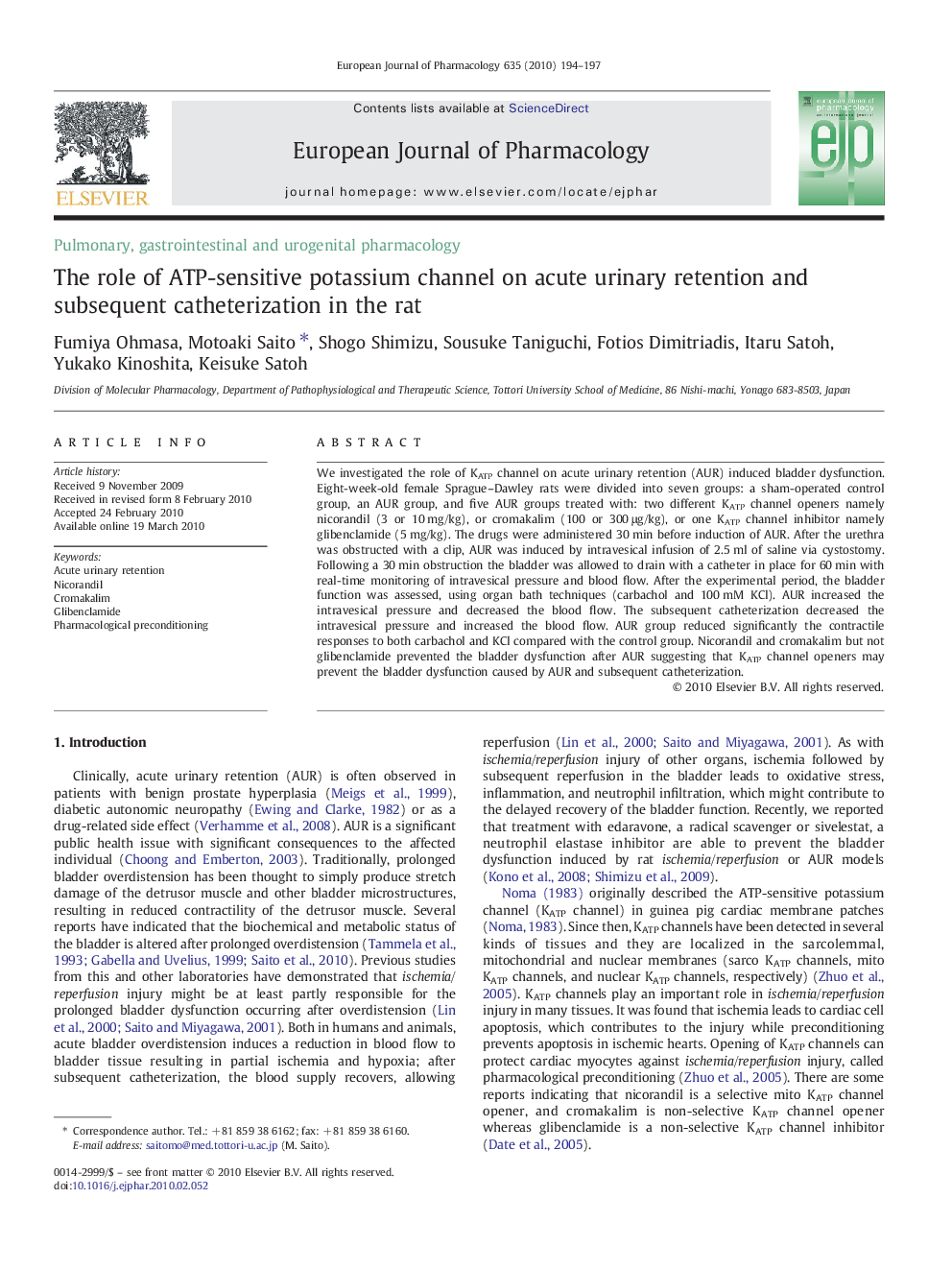| کد مقاله | کد نشریه | سال انتشار | مقاله انگلیسی | نسخه تمام متن |
|---|---|---|---|---|
| 2533611 | 1559058 | 2010 | 4 صفحه PDF | دانلود رایگان |

We investigated the role of KATP channel on acute urinary retention (AUR) induced bladder dysfunction. Eight-week-old female Sprague–Dawley rats were divided into seven groups: a sham-operated control group, an AUR group, and five AUR groups treated with: two different KATP channel openers namely nicorandil (3 or 10 mg/kg), or cromakalim (100 or 300 μg/kg), or one KATP channel inhibitor namely glibenclamide (5 mg/kg). The drugs were administered 30 min before induction of AUR. After the urethra was obstructed with a clip, AUR was induced by intravesical infusion of 2.5 ml of saline via cystostomy. Following a 30 min obstruction the bladder was allowed to drain with a catheter in place for 60 min with real-time monitoring of intravesical pressure and blood flow. After the experimental period, the bladder function was assessed, using organ bath techniques (carbachol and 100 mM KCl). AUR increased the intravesical pressure and decreased the blood flow. The subsequent catheterization decreased the intravesical pressure and increased the blood flow. AUR group reduced significantly the contractile responses to both carbachol and KCl compared with the control group. Nicorandil and cromakalim but not glibenclamide prevented the bladder dysfunction after AUR suggesting that KATP channel openers may prevent the bladder dysfunction caused by AUR and subsequent catheterization.
Journal: European Journal of Pharmacology - Volume 635, Issues 1–3, 10 June 2010, Pages 194–197